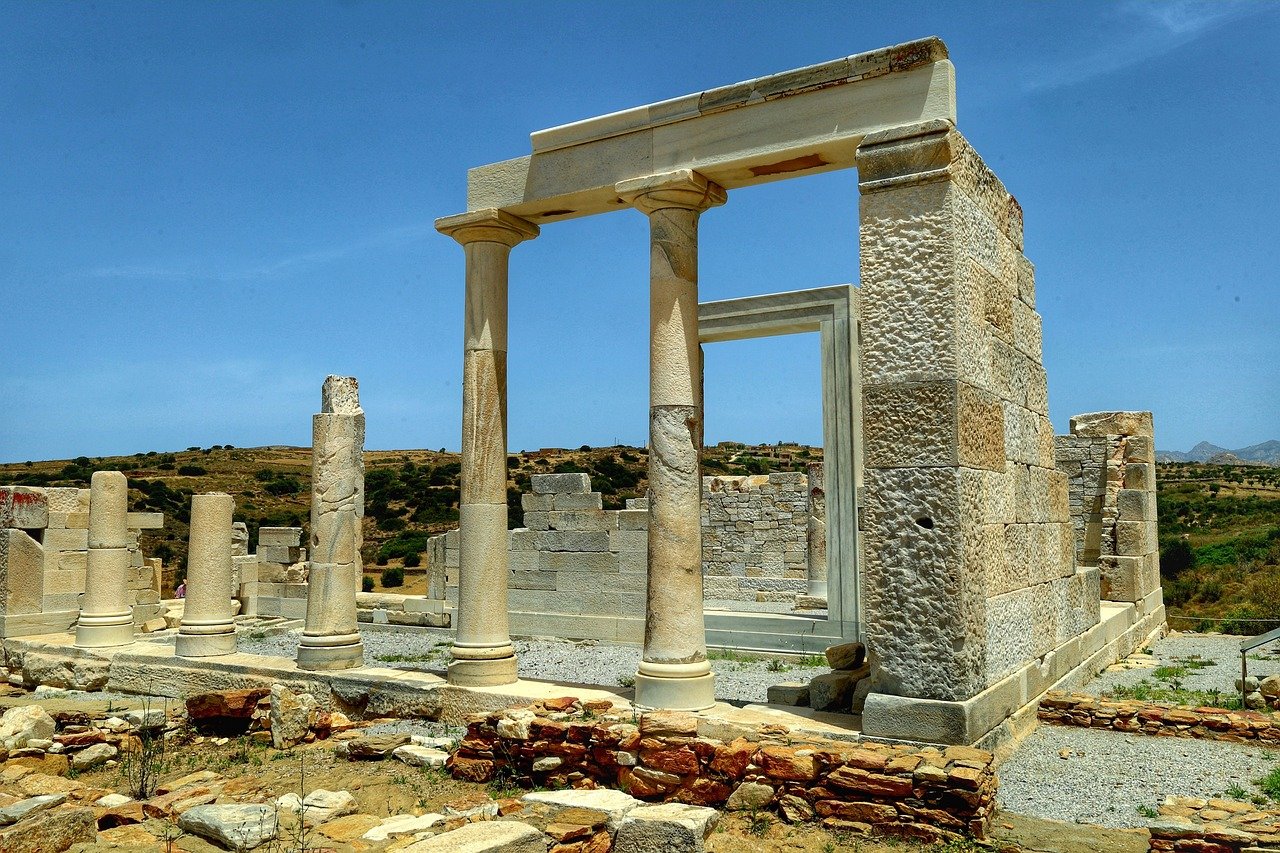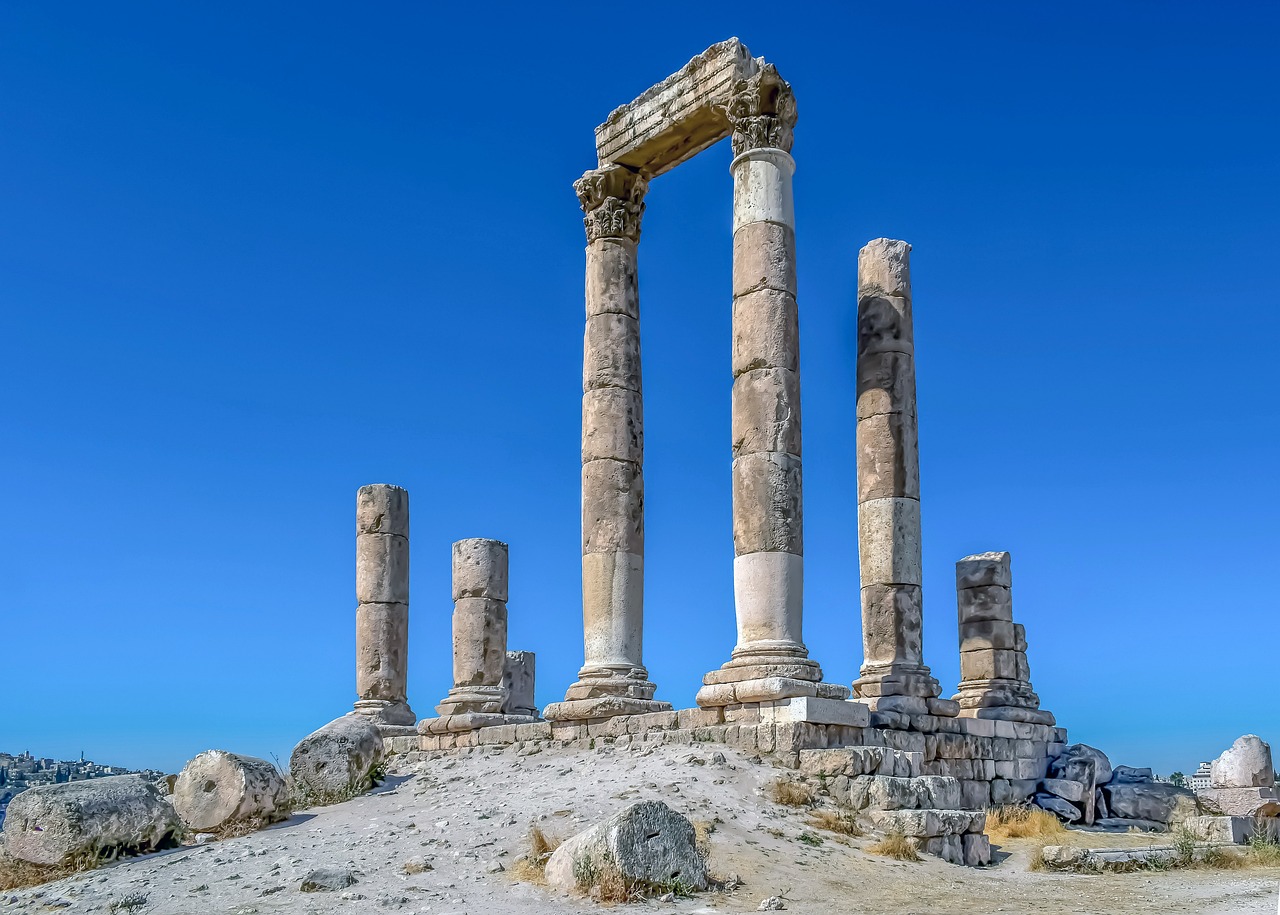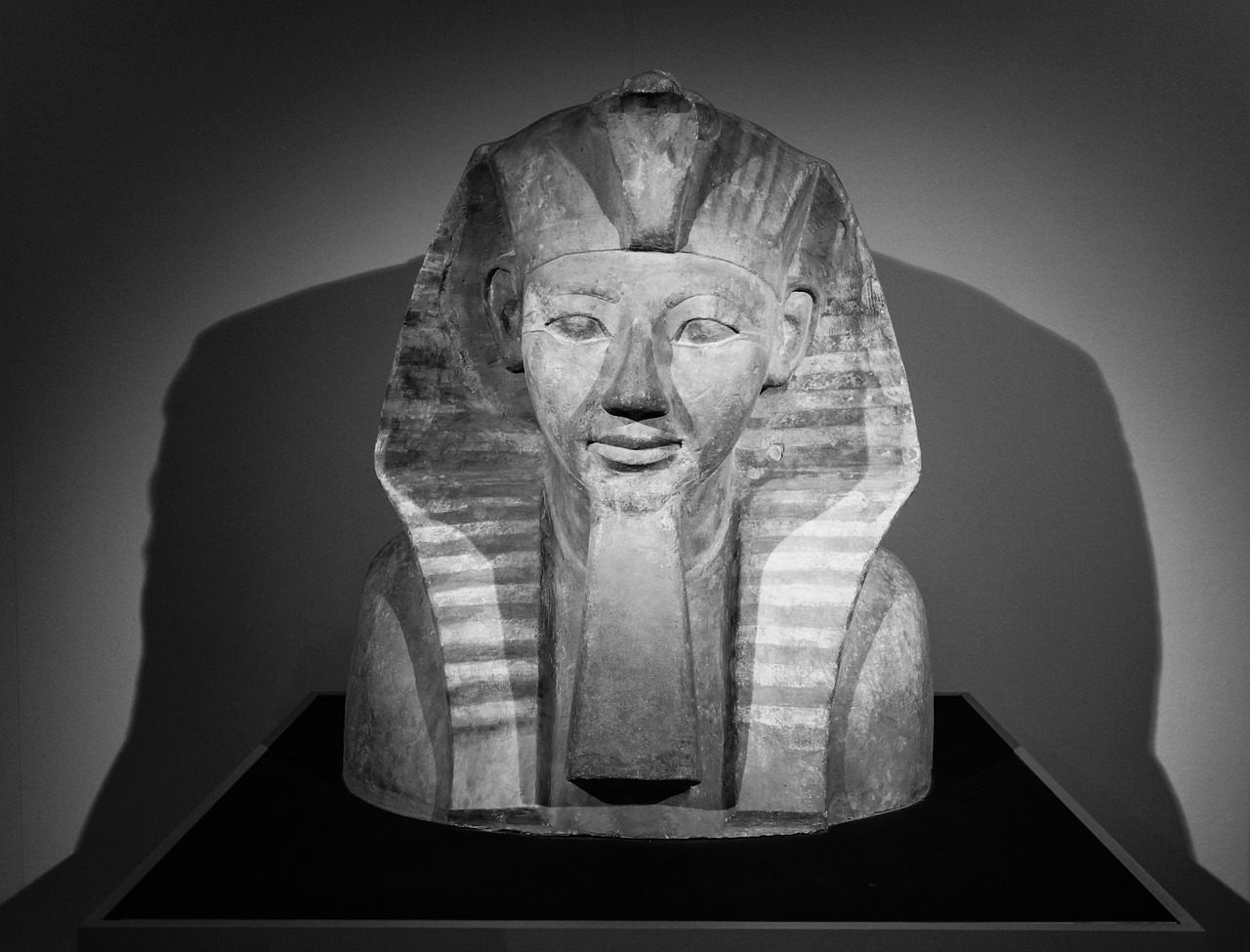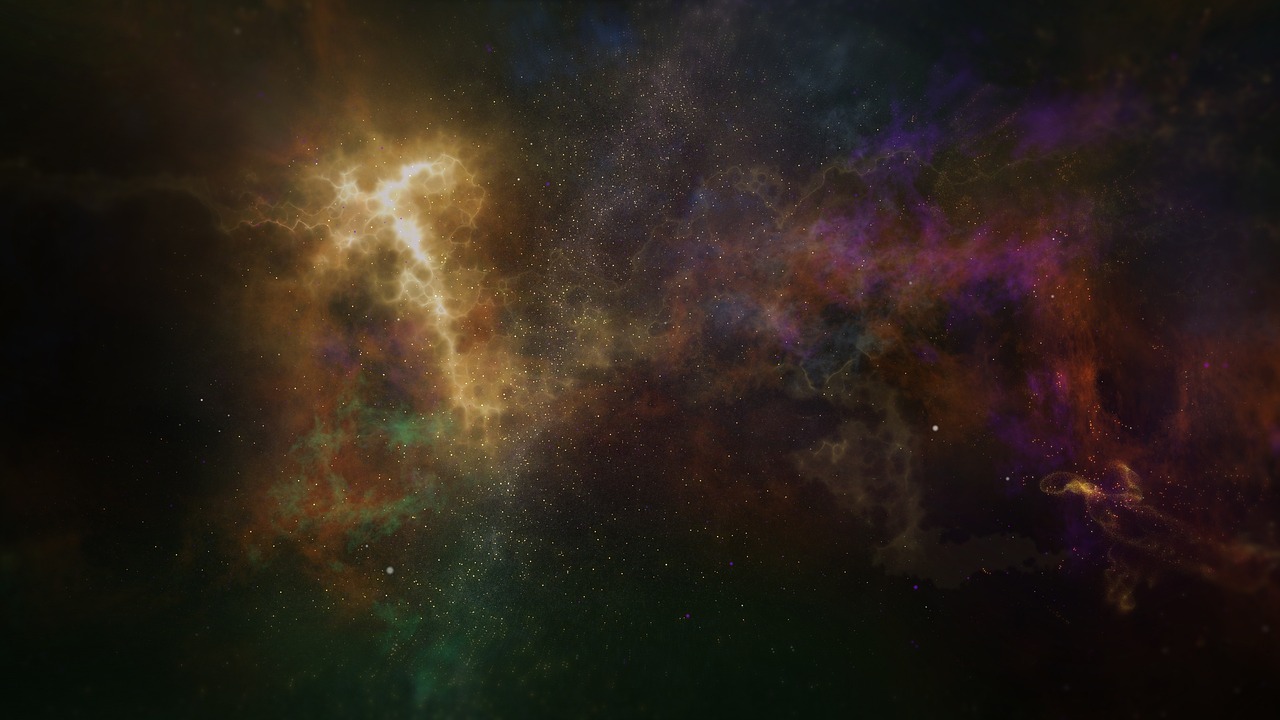The Secrets of the Ancient Egyptians' Cosmic Beliefs
The ancient Egyptians held profound beliefs about the cosmos that shaped their civilization in remarkable ways. Their connection to the celestial realm was not merely superficial; it permeated every aspect of their lives, from religious practices to architectural marvels. The mysteries surrounding their cosmic beliefs continue to intrigue and inspire modern minds, offering a glimpse into a worldview where the earthly and the divine were intricately intertwined.

Cosmic Deities and Mythology
The ancient Egyptians held profound beliefs in cosmic deities that shaped their mythology and religious practices. Among the most revered gods were Ra, the sun god symbolizing life and power; Nut, the sky goddess representing the firmament; and Osiris, the god of the afterlife and resurrection. These cosmic deities played pivotal roles in Egyptian creation stories, with Ra sailing through the sky each day and night, Nut swallowing the sun at dusk, and Osiris guiding souls in the underworld.
The Egyptians viewed these deities as not mere mythological figures but as cosmic forces governing the celestial bodies and natural phenomena. Ra's journey across the sky mirrored the cycle of life and death, Nut's arched body symbolized the heavens embracing the earth, and Osiris's resurrection signified the eternal renewal of life. Their worship was deeply intertwined with the cosmic order, reflecting the Egyptians' reverence for the interconnectedness of the universe.
Moreover, the mythology surrounding these cosmic deities served as a moral compass for the Egyptians, guiding their daily lives and spiritual practices. The stories of Ra's benevolence, Nut's protection, and Osiris's judgment instilled a sense of cosmic justice and divine order in the hearts of the ancient Egyptians. Through rituals, prayers, and offerings, they sought to align themselves with these celestial forces and ensure harmony in both the earthly and cosmic realms.

Celestial Alignments in Architecture
Ancient Egyptian architecture stands as a testament to the profound connection between the earthly realm and the celestial sphere. The alignment of structures such as the majestic pyramids and intricate temples with celestial phenomena was not merely a coincidence but a deliberate reflection of the Egyptians' reverence for the heavens. Imagine gazing up at the night sky and seeing the stars perfectly mirrored in the layout of these architectural marvels, each stone carefully placed to harmonize with the movements of the celestial bodies.
One of the most striking examples of celestial alignments in Egyptian architecture is the Great Pyramid of Giza, which is aligned with remarkable precision to the cardinal points of the compass. This meticulous orientation was not only for aesthetic purposes but also held deep symbolic significance, linking the pyramid to the cosmic forces that governed the universe. The alignment of the pyramid with the solstices and equinoxes further emphasized the Egyptians' belief in the cyclical nature of life and the eternal rhythms of the cosmos.
Moreover, the temples dedicated to various deities were often positioned in alignment with specific stars or constellations, serving as earthly conduits for cosmic energies. The positioning of temple entrances and inner chambers in accordance with celestial alignments was believed to enhance the spiritual potency of these sacred spaces, allowing worshippers to commune with the divine forces that ruled the skies.
As the sun rose and set, casting its golden light upon the temple walls, the Egyptians saw not just a daily occurrence but a sacred ritual performed by the cosmic gods themselves. The interplay of light and shadow within these sacred precincts mirrored the eternal struggle between darkness and illumination, death and rebirth, echoing the cosmic drama played out in the heavens above.
In essence, the celestial alignments in Egyptian architecture served as a tangible expression of the Egyptians' belief in the interconnectedness of all things, from the smallest stone to the vast expanse of the universe. By aligning their earthly creations with the celestial patterns above, the ancient Egyptians sought to bridge the gap between the material and spiritual worlds, creating a harmonious union between humanity and the cosmos.

Astronomical Instruments and Observations
Topics to be discussed in the article include the mystical connection between ancient Egyptians and the cosmos, their religious practices, beliefs in the afterlife, celestial symbolism in architecture, and the influence of cosmic forces on daily life.
Exploring the role of cosmic deities like Ra, Nut, and Osiris in Egyptian mythology, their significance in creation stories, and how these gods were believed to govern the celestial bodies and natural forces.
Examining how ancient Egyptian structures such as the pyramids and temples were aligned with celestial phenomena like solstices, equinoxes, and star patterns, reflecting their deep connection to the heavens.
Discussing the advanced astronomical knowledge of the Egyptians, their use of instruments like the merkhet and water clocks for timekeeping, and their observations of celestial events for religious and agricultural purposes.
The Egyptians were pioneers in the field of astronomy, utilizing sophisticated instruments to study the movements of celestial bodies. Among these instruments, the merkhet, a type of sighting tool, was used to align structures with the stars and track the motion of the sun and stars across the sky. Water clocks were also employed to measure time based on the flow of water, allowing for precise observations of celestial events and the development of calendars.
Through meticulous observations of the heavens, the Egyptians were able to predict astronomical phenomena such as the annual flooding of the Nile, crucial for their agricultural practices. They recognized the cyclical nature of celestial events and integrated this knowledge into their religious ceremonies and rituals, believing that the alignment of earthly activities with cosmic forces would bring prosperity and harmony.
Analyzing the use of celestial symbols in Egyptian art, hieroglyphs, and amulets, such as the sun disk, stars, and constellations, and how these representations conveyed spiritual and cosmic meanings.
Exploring the Egyptian beliefs in the afterlife, the soul's journey through the Duat (underworld), judgment in the Hall of Ma'at, and the ultimate goal of uniting with the cosmic forces for eternal life.
Investigating how the Egyptians incorporated cosmic beliefs into their daily rituals, agriculture, and governance, including the use of celestial calendars, astrology, and rituals to align with cosmic energies.
Examining the selection and construction of sacred sites like Karnak and Luxor temples based on cosmic energy principles, the alignment with specific stars or constellations, and the rituals performed to harness these energies.
Reflecting on the enduring legacy of ancient Egyptian cosmic beliefs in modern spirituality, astrology, and the continued fascination with their profound understanding of the interconnectedness between the earthly and celestial realms.
If you have any questions about the ancient Egyptians' cosmic beliefs or related topics, check out the FAQ section below:

Cosmic Symbolism in Art and Hieroglyphs
Ancient Egyptian art and hieroglyphs are rich with cosmic symbolism, offering a glimpse into the profound connection the Egyptians felt with the celestial realm. The use of celestial symbols such as the sun disk, stars, and constellations in their artwork served a dual purpose - conveying both spiritual and cosmic meanings. The sun, symbolizing the god Ra, was a prominent motif representing life, power, and rebirth. Stars and constellations were often depicted to symbolize guidance, eternity, and the interconnectedness of all living beings with the universe.
Moreover, hieroglyphs, the intricate system of writing used by the Egyptians, also incorporated cosmic symbolism. Certain hieroglyphs represented celestial bodies or cosmic forces, infusing written language with cosmic significance. For example, the hieroglyph for the sun god Ra was used not only to represent the deity but also to convey concepts related to light, warmth, and divine protection.
The intricate artwork found in tombs, temples, and artifacts further showcases the Egyptians' deep reverence for the cosmos. Hieroglyphic inscriptions often combined cosmic symbols with religious and mythological narratives, creating a tapestry of meanings that reflected the interconnectedness of the earthly and celestial realms in Egyptian belief systems.

Afterlife and the Journey of the Soul
Exploring the ancient Egyptian beliefs in the afterlife unveils a fascinating journey of the soul through the Duat, the realm of the dead. Egyptians held a profound conviction that life continued beyond death, with the deceased embarking on a perilous voyage filled with trials and tribulations. Central to this journey was the concept of judgment in the Hall of Ma'at, where the heart of the deceased was weighed against the feather of truth. Should the heart prove lighter than the feather, the soul was deemed pure and granted passage to the eternal realm.
Moreover, the ultimate goal of the soul's journey was to unite with the cosmic forces, achieving a state of eternal life and harmony with the universe. This union symbolized the culmination of the individual's spiritual evolution and their integration into the cosmic order. The Egyptians believed that by aligning with the cosmic energies and following the path of righteousness, one could transcend mortal existence and attain immortality in the divine realm.
Furthermore, the intricate rituals and funerary practices observed by the ancient Egyptians were designed to facilitate the soul's journey and ensure a successful transition to the afterlife. The elaborate tombs, mummification process, and burial rites were all aimed at preserving the physical body and preparing the soul for its voyage through the Duat. The Book of the Dead, a collection of spells and incantations, served as a guidebook for the deceased, providing instructions on navigating the challenges of the underworld and attaining spiritual enlightenment.

Cosmic Influences on Daily Life
Have you ever wondered how the ancient Egyptians integrated cosmic beliefs into their daily lives? It wasn't just about building grand structures or performing elaborate rituals; cosmic influences permeated every aspect of their existence. From the moment they woke up to the time they went to sleep, the Egyptians were attuned to the rhythms of the cosmos.
One of the most fascinating ways in which cosmic influences manifested in daily life was through the use of celestial calendars. The Egyptians closely monitored the movements of the stars and planets to determine auspicious times for planting, harvesting, and other agricultural activities. Their lives were intricately intertwined with the celestial cycles, guiding them in their daily tasks and decision-making.
Astrology also played a significant role in Egyptian society, with individuals seeking guidance from celestial bodies to understand their personalities, relationships, and destinies. Priests and scribes were well-versed in interpreting the positions of the stars and planets, offering insights into the cosmic forces at play in their lives.
Rituals were another essential aspect of daily life that reflected cosmic influences. Whether it was offering prayers to specific deities associated with celestial bodies or performing ceremonies aligned with astronomical events, the Egyptians believed that their actions could harmonize with the cosmic energies surrounding them.
Moreover, governance in ancient Egypt was not exempt from cosmic considerations. Pharaohs consulted with priests and astronomers to ensure that their decisions aligned with the cosmic order, seeking divine guidance in matters of statecraft and governance. The alignment of the ruler's actions with the movements of the heavens was believed to maintain balance and prosperity in the kingdom.
Overall, the cosmic influences on daily life in ancient Egypt were profound and pervasive, shaping everything from religious practices to agricultural pursuits. By acknowledging the interconnectedness between the earthly and celestial realms, the Egyptians sought to live in harmony with the cosmic forces that governed their world.

Sacred Sites and Cosmic Energy
Sacred sites in ancient Egypt were not merely physical structures but were believed to be imbued with cosmic energy that connected the earthly realm with the celestial realm. The selection and construction of these sites, such as the Karnak and Luxor temples, were meticulously planned to align with specific stars or constellations, harnessing the cosmic energies believed to flow from these celestial bodies. The Egyptians performed elaborate rituals at these sacred sites to channel and amplify this cosmic energy, seeking spiritual enlightenment and divine connection.

Legacy of Egyptian Cosmic Beliefs
The legacy of Egyptian cosmic beliefs continues to captivate and inspire individuals across the globe, transcending time and geographical boundaries. The profound understanding of the interconnectedness between the earthly realm and the celestial spheres, as elucidated by the ancient Egyptians, has left an indelible mark on human consciousness.
Modern spirituality has been enriched by the enduring legacy of Egyptian cosmic beliefs, with many drawing parallels between the cosmic forces revered by the ancient Egyptians and contemporary metaphysical principles. The idea of aligning one's life with the rhythms of the cosmos for spiritual enlightenment resonates strongly in today's society.
Astrology, which traces its roots back to the celestial observations and beliefs of the Egyptians, continues to be a popular tool for self-reflection and guidance. The zodiac signs, constellations, and planetary influences that the ancient Egyptians studied and revered are still consulted by many seeking insight into their personalities and destinies.
Furthermore, the architectural marvels of ancient Egypt, meticulously aligned with celestial phenomena, stand as a testament to the reverence the Egyptians held for the cosmos. The intricate knowledge of astronomy and geometry displayed in structures like the Great Pyramid of Giza not only showcases their technological prowess but also underscores their spiritual connection to the heavens.
The legacy of Egyptian cosmic beliefs also extends to the realm of art and symbolism, with many contemporary artists drawing inspiration from the celestial motifs and hieroglyphs of ancient Egypt. The use of cosmic symbols such as the sun disk, stars, and constellations continues to evoke a sense of wonder and mystery, inviting viewers to contemplate the vastness of the universe.
In conclusion, the legacy of Egyptian cosmic beliefs serves as a bridge between the past and the present, inviting us to explore the mysteries of the cosmos and our place within it. By delving into the wisdom of the ancient Egyptians, we not only gain insight into their worldview but also discover timeless truths that resonate with the human spirit.
Frequently Asked Questions
- What were the main cosmic deities worshipped by the ancient Egyptians?
The ancient Egyptians worshipped cosmic deities such as Ra, Nut, and Osiris. Ra, the sun god, was believed to be the creator and ruler of the universe, while Nut was the goddess of the sky and stars. Osiris, the god of the afterlife, played a crucial role in the journey of the soul.
- How did the ancient Egyptians incorporate celestial alignments in their architecture?
Ancient Egyptian structures like the pyramids and temples were meticulously aligned with celestial phenomena such as solstices, equinoxes, and star patterns. These alignments reflected the Egyptians' profound connection to the heavens and their belief in the influence of cosmic forces on earthly life.
- What role did astronomical instruments play in ancient Egyptian society?
The Egyptians used advanced astronomical instruments like the merkhet and water clocks for timekeeping and celestial observations. These tools were essential for religious rituals, agricultural planning, and understanding the movements of the celestial bodies.
- How did the ancient Egyptians view the afterlife and the journey of the soul?
Ancient Egyptians believed in the existence of an afterlife where the soul journeyed through the Duat, underwent judgment in the Hall of Ma'at, and aimed to unite with cosmic forces for eternal life. This belief in the afterlife shaped their funerary practices and religious rituals.
- What is the significance of cosmic symbolism in Egyptian art and hieroglyphs?
Cosmic symbols such as the sun disk, stars, and constellations were prevalent in Egyptian art, hieroglyphs, and amulets. These symbols conveyed spiritual and cosmic meanings, reflecting the Egyptians' belief in the interconnectedness between the earthly and celestial realms.



















